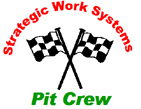The Time is Now
Having trouble retaining top-skilled maintenance technicians? Motivating your technicians to master new skills a problem? Is recruiting promising maintenance employees difficult? Are most of your maintenance employees topped out in pay? Is your maintenance compensation program keeping highly skilled prospects from applying for job openings?
If you answered “yes” to any of these questions plaguing many maintenance organizations today, there is a workable solution you should seriously consider. It’s called a pay-for-applied-skills compensation plan. In such a pay plan, an employee’s pay is based on the skills and knowledge he applies on the job rather than the pay rate of the job classification he holds. The difference? You are paying for what the maintenance employee actually accomplishes on the job. Higher-skilled employees earn more per hour than those who perform at the minimal expected levels.
Pay-for-Skills is a Win-Win Program
In a recent manufacturing plant example, many of the 165 maintenance employees were “high seniority” and at top pay in their traditional pay plan. They had been topped out for years. Regardless of the skills or the job classification, most maintenance employees were paid the same hourly rate: Lubricators and truck mechanics were paid the same as instrumentation and control technicians and journeyman-level millwrights thanks to a four-year time-in grade pay plan. In this plant, the I&C technicians and millwrights clearly added more value to equipment reliability and plant performance than truck mechanics and lubricators. Truck mechanics and lubricators were essential to the operation but were in plentiful supply and easily trained. I&C mechanics and millwrights were a scarce resource, and it took years to develop the skills.
A second problem was motivation. How could you possibly encourage people to learn and apply new skills for improving reliability if they felt that there was “nothing in it for me”? And new employers in the area were recruiting those top-skilled technicians and millwrights by higher pay and opportunities for advancement. What encouragement did they have to stay around?
A third problem was a difficulty of recruiting new, higher-skilled maintenance technicians. They struggled with minimal chances for advancement and no provisions for starting out at higher than entry-level pay.
So, how was the pay-for-applied-skills program developed in this case? It began with a comprehensive definition of the skills and knowledge required to perform the maintenance jobs in the plant. This listing of “job-performance requirements” was developed using a duty/task analysis process. (Beware not to take a short cut with this step as it is prescribed in the federal Uniform Guidelines on Employee Selection Procedures.) The duty/task analysis also provided a valid and fair way to assess employees’ skills and knowledge, structure on-job training and classroom training programs, and assess the skills and knowledge of prospective employees.
The next step determined the advancement requirements, or criteria, and dollar value of each pay level in the new pay plan. The emphasis here – making pay rates competitive in the area and a fair pay increment for the applied skills and knowledge.
Another important consideration here was not to develop a “general skills advancement plan” where everybody had to have the same skills and knowledge to advance. Here was an opportunity to structure the new pay plan to emphasize the skills and knowledge necessary to improve and sustain new levels of equipment performance and reliability for today and into the future. Here was a chance to develop a “multi-skilled” maintenance workforce. And here was an opportunity to tap the talents and interests of the maintenance employees. This was a true “win-win”: The business wins through training and qualification of maintenance employees to perform the tasks that truly make a difference, and the employees win by learning to do what they are interested in doing. One of the proven principles of learning is this: “Adults learn what they can use and are interested in.” One of the principles of business is to “reward what you value.” A pay-for-applied-skills plan addresses both of these principles.
So, what about maintenance employees who did not want to learn and apply new skills? (And you will always have some….) If they are good employees, performing needed tasks on the job, they can fit into the plan at a level that either matches their current pay or that matches the skills and knowledge they have. There is no pressure to learn and apply more skills on the job. But, in the future, if they wish to participate in learning new and/or higher-level skills, they can advance in pay by meeting the requirements of the next levels in the pay-for-applied-skills plan.
Three Elements Needed for Successful Program
The downside of a pay-for-applied-skills plan, and probably the biggest barrier to this effective compensation system, is two-fold: It is different, and it takes a bit more time to administer than the old time-in grade job classification systems. Over the years, we have learned that changing a compensation system is like changing organizational behavior. It requires three elements:
- There must be a business reason to change.
- There must be a sense of urgency.
- People who can influence the changes required must lead it. Labor leaders must be involved early in the conceptualization process in plants and facilities where the workforce is represented by a labor union.
Today, much has changed – more competition, reduced operating costs, newer technologies, demands for higher levels of equipment reliability and performance, and shortages of skilled and qualified maintenance technicians throughout America. A maintenance pay-for-applied-skills plan could be just what your organization needs to breathe new life into a pay and progression process that was based on skills and knowledge of the last century.
© 2002
Robert M. Williamson
Strategic Work Systems, Inc.
Columbus, NC 28722
[email protected]
![]() Download a PDF of this article by clicking here Pay for Applied Skills
Download a PDF of this article by clicking here Pay for Applied Skills
